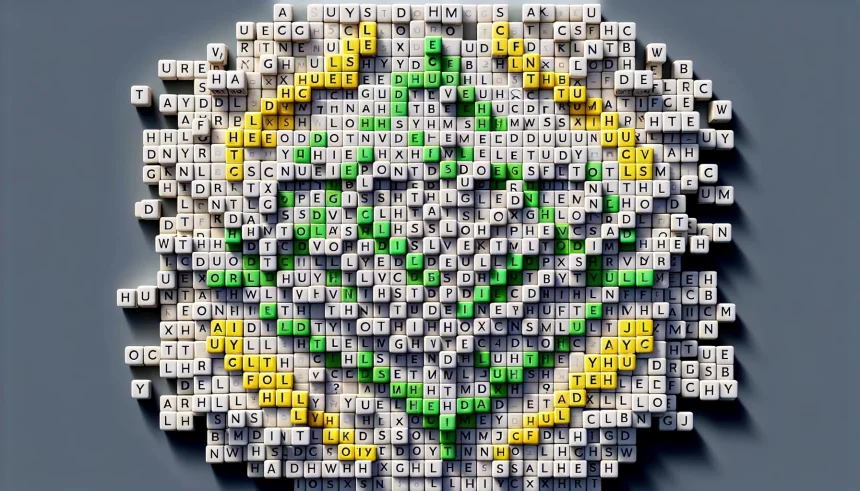Rising numbers of daily Wordle enthusiasts logged in on July 10 to tackle the puzzle, testing their vocabulary and deductive reasoning with renewed commitment. Participants often find themselves returning each morning for the familiar challenge on their browsers or mobile apps, seeking small personal victories and moments of mental engagement. For many, the process offers a subtle sense of community, as social media feeds light up with colorful box grids and celebratory posts. Wordle—now owned by The New York Times—retains its core mechanic: identifying a five-letter word in no more than six attempts, and each round brings a unique blend of chance and skill.
Wordle’s gameplay has seen little fundamental change since its acquisition by The New York Times, maintaining its accessible rules and daily reset. On earlier occasions, players faced easier, more straightforward answers, resulting in quick solutions that presented fewer challenges. The July 10 puzzle, however, presented a situation in which all but one letter could be accurately guessed, leading to a persistent “grey box” that frustrated many users. Unlike some past puzzles heavily reliant on rare or double letters, “JUMPY” featured distinct letters and no repeats, slightly shifting the puzzle-solving approach compared to previous days like “POPPY” or “STILT.”
What Clues Guided Players to the Answer?
Hints for July 10 centered on emotions such as nervousness or alertness, drawing parallels to feelings people experience after watching a suspenseful movie. The guidance did not mention repeated letters, narrowing the choices considerably for attentive players. These clues prompted users to explore words associated with anxious states or twitchy behavior, aiding in more focused guesses during their limited attempts. Players benefited from strategically chosen starting words featuring diverse vowels and consonants, increasing their chance of identifying correct letters early on.
How Did the Community Respond to the Puzzle?
Reactions circulated widely as participants shared their attempts and expressed frustration over narrowly missing the solution due to one elusive letter. Messages and screenshots appeared across forums and social platforms, with many recounting how they arrived at or missed the answer “JUMPY.” For those unable to solve the puzzle, the option to seek hints or pause and revisit the game later encouraged less pressured problem-solving. The recurring advice not to rush—reminding users they have until midnight—remained evident, reinforcing the casual nature of Wordle’s design.
Why Do Players Keep Returning to Wordle?
Despite occasional setbacks or challenging words, the six-attempt format and evolving word list sustain engagement. Tracking past answers, such as “NOVEL,” “DREAD,” and “CURVE,” helps refine both user strategy and curiosity about upcoming words. Many enjoy the incremental improvement in their puzzle-solving skills, and for newer players, using strong initial words like “ARISE” proves beneficial. The simplicity of the game mechanic, coupled with satisfaction from small daily triumphs, continually draws a steady audience.
Wordle, originating as a side project by Josh Wardle, has formed a significant daily ritual for a global audience. The lack of a timer and the encouragement to step away and return later when stuck help set it apart from other online games. While some may attempt to brute-force the answer, rules restricting non-words ensure that deductive thinking remains essential. With its continued influence on puzzle design—spawning similar games focused on diverse themes such as music or geography—Wordle illustrates the enduring appeal of short-form, accessible puzzles in the digital era. As one player reflected,
“There’s something satisfying about solving a puzzle that thousands are tackling at the same time.”
Wordle’s persistent popularity reflects its seamless blend of simplicity, accessibility, and daily variation. The transition to New York Times ownership has not disrupted its essence, nor have growing public strategies significantly diminished its challenge. As more players exchange methods and reflect on shared moments of triumph or struggle, Wordle maintains both an individual and communal role. Familiarity with strong starting words, attention to game-specific hints, and the ability to adapt tactics—especially as puzzles like “JUMPY” appear—allow players to steadily build logical reasoning skills. The game continues to provide a rewarding outlet for brief yet engaging language play, holding its place within digital culture’s daily habits.
- “JUMPY” challenged Wordle players with unique, non-repeating letters.
- Hints narrowed possibilities, focusing on nervousness and alert states.
- Wordle’s format and sense of community sustain its strong popularity.










